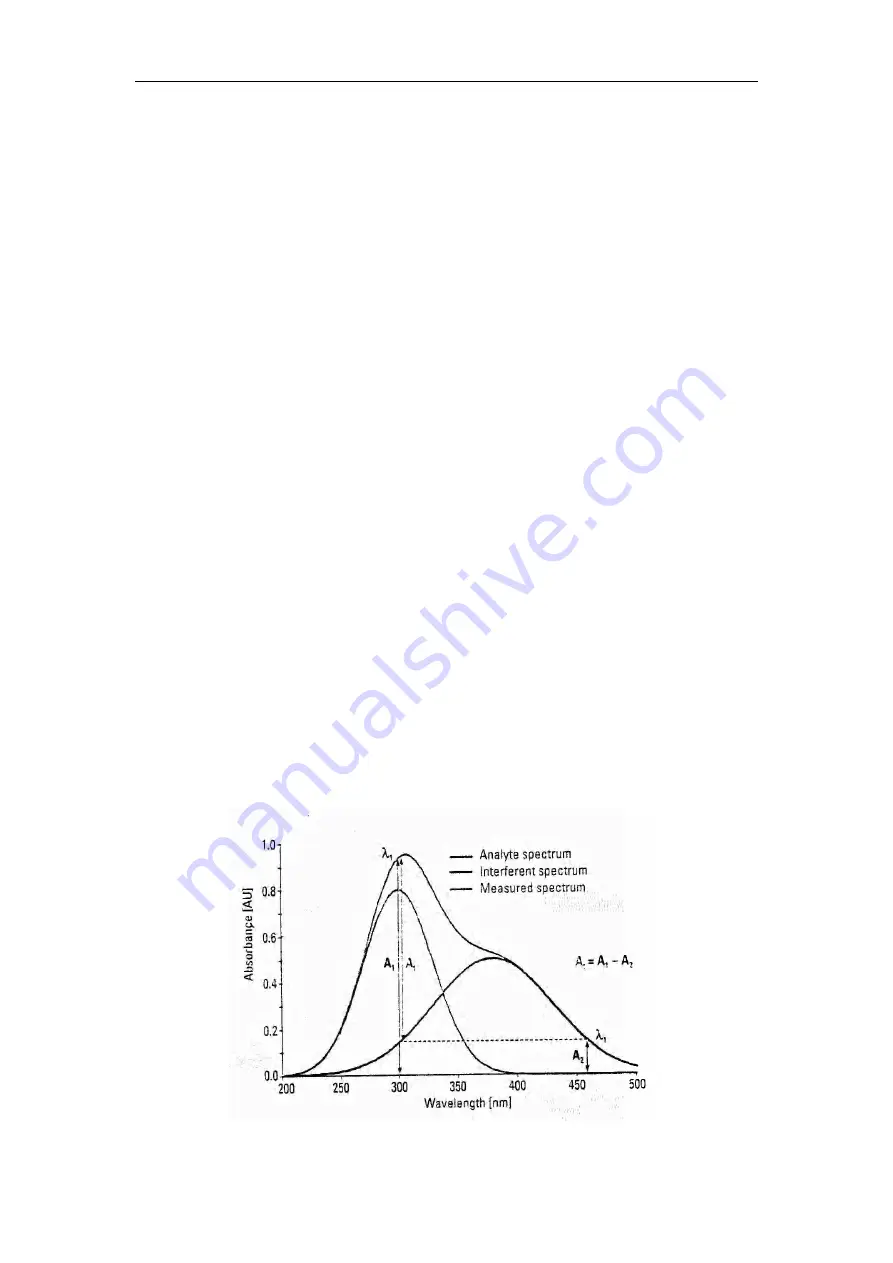
49
Appendix B
A number of correction techniques can be used to eliminate or reduce
interference errors. In general, if the source of the error is known and is
consistent from sample to sample, the error can be eliminated. On the
other hand, if the source is unknown and varies from sample to sample,
the error can be reduced but not eliminated. Correction techniques can
always require data from at least two wavelengths. The more
sophisticated correction techniques require multiwavelength or spectral
data.
A.1 Isoabsorbance
When a known interfering component with a known spectrum is present,
the error introduced by this component at the analytical wavelength for
the target analyte can be eliminated by selecting a reference wavelength
at which the interfering compound exhibits the same absorbance as it
does at the analytical wavelength. The absorbance at this reference
wavelength is subtracted from the absorbance at the analytical
wavelength, as shown in Figure A1.The residual absorbance is the true
absorbance of the analyte.
This technique is less reliable when the spectra of the analyte and of the
interferent are highly similar. Moreover, it can correct for only one
interference
Fig A1 Isoabsorbance correction
Summary of Contents for DU-8800DS Series
Page 1: ...USER S MANUAL For DU 8800DS RS Series Spectrophotometers Drawell Scientific...
Page 2: ......
Page 4: ......
Page 56: ...52...




































